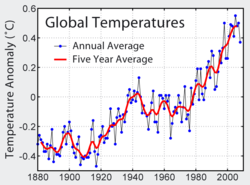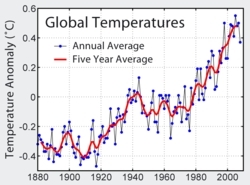Climate Literacy Handbook: Introduction
| Topics: |
Previous: none| Table of Contents (Climate Literacy Handbook: Introduction) |Next: Guiding Principle for informed climate decision
|
What is climate science literacy? Climate Science Literacy is an understanding of your influence of climate and climate's influence on you and society. A climate-literate person:
Why does climate science literacy matter?
Climate science literacy is a part of science literacy.
From the American Association for the Advancement of Science, Atlas of Science Literacy, Volume 2, Project 2061. People who are climate science literate know that climate science can inform our decisions that improve quality of life. They have a basic understanding of the climate system, including the natural and human-caused factors that affect it. Climate science literate individuals understand how climate observations and records as well as computer modeling contribute to scientific knowledge about climate. They are aware of the fundamental relationship between climate and human life and the many ways in which climate has always played a role in human health. They have the ability to assess the validity of scientific arguments about climate and to use that information to support their decisions. Climate science literacy is an ongoing process No single person is expected to understand every detail about all of the fundamental climate science literacy concepts. Full comprehension of these interconnected concepts will require a systems-thinking approach, meaning the ability to understand complex interconnections among all of the components of the climate system. Moreover, as climate science progresses and as efforts to educate the people about climate’s influence on them and their influence on the climate system mature, public understanding will continue to grow. Climate is an ideal interdisciplinary theme for lifelong learning about the scientific process and the ways in which humans affect and are affected by the Earth’s systems. This rich topic can be approached at many levels, from comparing the daily weather with long-term records to exploring abstract representations of climate in computer models to examining how climate change impacts human and ecosystem health. Learners of all ages can use data from their own experiments, data collected by satellites and other observation systems, or records from a range of physical, chemical, biological, geographical, social, economic, and historical sources to explore the impacts of climate and potential adaptation and mitigation strategies. Climate changes Throughout its history, Earth's climate has varied reflecting the complex interactions and dependencies of the solar, oceanic, terrestrial, atmospheric, and living components that make up planet Earth's systems. For at least the last million years, our world has experienced cycles of warming and cooling that take approximately 100,000 years to complete. Over the course of each cycle, global average [[temperature]s] have fallen and then risen again by about 9°F (5°C), each time taking Earth into an ice age and then warming it again. This cycle is believed associated with regular changes in Earth's orbit that alter the intensity of solar energy the planet receives, in e.g. the polar regions at a given season. Earth's climate has also been influenced on a very long timescales by changes in ocean circulation that result from plate tectonic movements. Earth's climate has changed abruptly at times, sometimes as a result of slower natural processes such as shifts in ocean circulation, sometimes due to sudden events such as massive volcanic eruptions. In addition, internal variations take place due to the chaotic nature of the climate dynamics. Species and ecosystems have either adapted to these past climate variations or perished.  The full instrumental temperature record of the last 150 years, showing the rise in global temperatures during the last century. Source: Global Warming Art The full instrumental temperature record of the last 150 years, showing the rise in global temperatures during the last century. Source: Global Warming Art While global climate has been relatively stable over the last 10,000 years—the span of human civilization—regional variations in climate patterns have influenced human history in profound ways, playing an integral role in whether societies thrived or failed. We now know that the opposite is also true: human activities—burning fossil fuels and deforesting large areas of land, for instance—have had a profound influence on Earth’s climate. In its 2007 Fourth Assessment, the Intergovernmental Panel on Climate Change (IPCC) stated that it had “very high confidence that the global average net effect of human activities since 1750 has been one of warming.” The IPCC attributes humanity’s global warming influence primarily to the increase in three key heat-trapping gases in the atmosphere: carbon dioxide, methane, and nitrous oxide. Feedback processes (e.g. increased atmospheric humidity) are also involved and partly responsible for the warming, although these constitute a response to the changes in those greenhouse gases. The U.S. Climate Change Science Program published findings in agreement with the IPCC report, stating that “studies to detect climate change and attribute its causes using patterns of observed temperature change in space and time show clear evidence of human influences on the climate system (due to changes in greenhouse gases, aerosols, and stratospheric ozone).” To protect fragile [[ecosystem]s] and to build sustainable communities that are resilient to climate change—including extreme weather and climate events—a climate-literate citizenship is essential. This climate science literacy guide identifies the essential principles and fundamental concepts that individuals and communities should understand about Earth’s climate system. Such understanding improves our ability to make decisions about activities that increase vulnerability to the impacts of climate change and to take precautionary steps in our lives and livelihoods that would reduce those vulnerabilities. How do we know what is scientifically correct? Science is an on-going process of making observations and using evidence to test hypotheses. As new ideas are developed and new data are obtained, oftentimes enabled by new technologies, our understanding evolves. The scientific community uses a highly formalized version of peer review to validate research results and our understanding of their significance. Researchers describe their experiments, results, and interpretations in scientific manuscripts and submit them to a scientific journal that specializes in their field of science. Scientists who are experts in that field serve as “referees” for the journal: they read the manuscript carefully to judge the reliability of the research design and check that the interpretations are supported by the data. Based on the reviews, journal editors may accept or reject manuscripts or ask the authors to make revisions if the study has insufficient data or unsound interpretations. Through this process, only those concepts that have been described through well-documented research and subjected to the scrutiny of other experts in the field become published papers in science journals and accepted as current science knowledge. Although peer review does not guarantee that any particular published result is valid, it does provide a high assurance that the work has been carefully vetted for accuracy by informed experts prior to publication. The overwhelming majority of peer-reviewed papers about global climate change acknowledge that human activities are substantially contributing factors. Informed climate decisions require an integrated approach. In the coming decades, scientists expect climate change to have an increasing impact on human and natural systems. In a warmer world, accessibility to food, water, raw materials, and energy are likely to change. Human health, biodiversity, economic stability, and national security are also expected to be affected by climate change. Climate model projections suggest that negative effects of climate change will significantly outweigh positive ones. The nation’s ability to prepare for and adapt to new conditions may be exceeded as the rate of climate change increases. Reducing our vulnerability to these impacts depends not only upon our ability to understand climate science and the implications of climate change, but also upon our ability to integrate and use that knowledge effectively. Changes in our economy and infrastructure as well as individual attitudes, societal values, and government policies will be required to alter the current trajectory of climate’s impact on human lives. The resolve of individuals, communities, and countries to identify and implement effective management strategies for critical institutional and natural resources will be necessary to ensure the stability of both human and natural systems as temperatures rise. This climate science literacy document focuses primarily on the physical and biological science aspects of climate and climate change. Yet as nations and the international community seek solutions to global climate change over the coming decades, a more comprehensive, interdisciplinary approach to climate literacy—one that includes economic and social considerations—will play a vital role in knowledgeable planning, decision making, and governance. A new effort is in development within the social sciences community to produce a companion document that will address these aspects of climate literacy. Together, these documents will promote informed decision-making and effective systems-level responses to climate change that reflect a fundamental understanding of climate science. It is imperative that these responses to climate change embrace the following guiding principle. |
|
|
